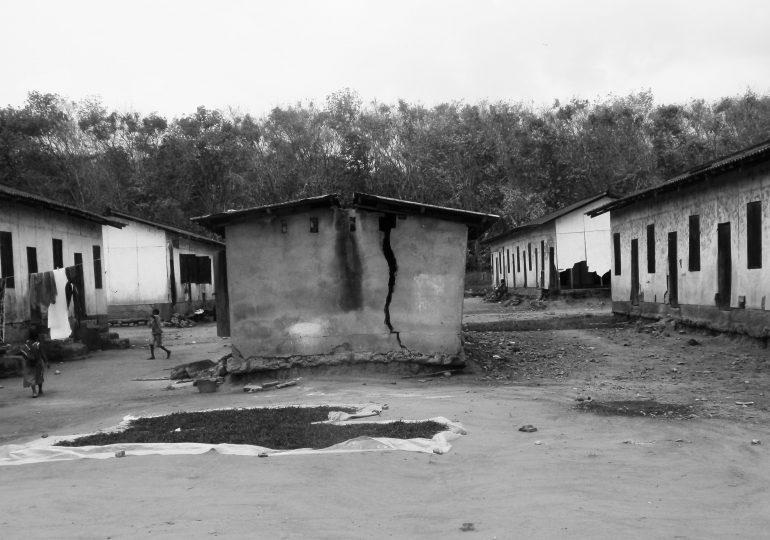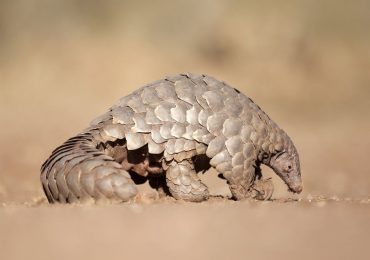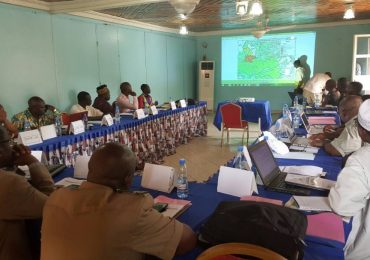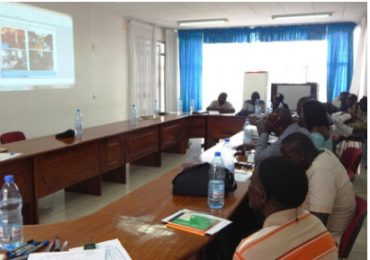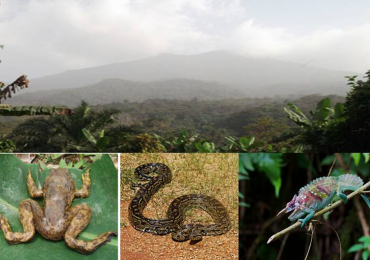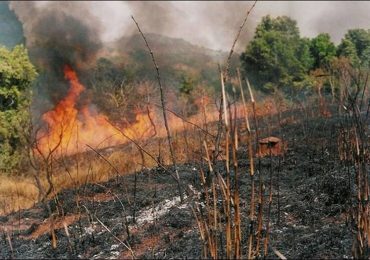AZORE OPIO & REGINA LEKE
Until Banana-Link made a documentary exposing the CDC/Delmonte Tiko Banana Project’s apparent casual use of toxic chemicals to spray their banana crops, the corporation had been an adorable agro-industrial undertaking in the eyes of the public.
Some of the most common nematicides and herbicides that the Tiko Banana Project uses are also known to be hazardous to humans. While the nematicides (Dithane, Counter 15G, Mocap and Furadan) kill borers, weevils and other nematodes which destroy the root systems of bananas, the toxic chemicals may also slowly and stealthily harm labourers.
A worker at Camp 8, who spoke on condition of anonymity, said inhaling the vapours or coming into contact with the said chemicals, directly or otherwise, may cause cramps, vomiting, fainting and can even cause sterility in men.
“Indeed, the chemicals are highly toxic. However, they neutralize with dolomite or calcium carbonate. The trouble is, CDC does not seem interested in the labourers’ welfare,” the worker told The Green Vision.
“No prior warning is issued before aerial spraying. Often aerial spraying is carried out even when workers are in the field,” he said, “after the spraying, women who are de-leafing the bananas are affected by sigatoka. Men harvesting fruits immediately after spraying are also victims. People who are passing, or living around the banana plantation areas and other workers not involved in spraying traverse applied areas, are affected too because they don’t have personal protection equipments (PPEs). To make matters worse, there is no enforcement of safety regulations.”
A young man, who works in the packing house told The Green Vision that, “whenever they spray, they don’t consider those in the packing house who are not protected.”
“Most often, the CDC authorities rush to give us gloves only when a team from outside comes for inspection,” said Albertine, a 35-year-old mother of three, who is a packer at the plantation.
She said the noxious chemicals used on banana at CDC/Delmonte Tiko Banana Project have destroyed her palms.
“Before I came to Delmonte, my palms were very healthy. But because we are not given gloves to use when working, the chemicals have damaged my palms,” Albertine said.
Richard Ntah, 37 year old and married, with a son, said a “very dangerous chemical Counter has killed about five people whom I knew.”
The deflowerer said the company uses Counter to spray the bananas to kill insects which eat up the roots of the crops, thus retarding their growth.
“This chemical is toxic and because often workers are not protected, they inhale it and they are often affected by the chemicals,” Ntah told The Green Vision.
Other problems that seem to plague the CDC/Delmonte workers include pick-ups as early as 4 a.m and low pay, which stands at between 30.000 and 40.000 francs cfa, pay range for unskilled workers.
“We lose sleep. In addition, vehicles are supposed to pick up workers from the farms by 2 pm, but most often the trucks delay by hours and some farmers collapse due to hunger,” said one of the workers.
He added, “If CDC can acquire more vehicles, it would solve this problem,” he said.
Implicating Scientific Study
A scientific study adds to concerns about CDC’s use and removal of chemical waste.
“All factory effluent in Tiko is jointly drained into the settling ponds after residual rubber recovery at the rubber trap. Factory wastewater is a mixture of high strength type (generated from rotary screen, creeper and moulding) and low strength effluent (from wet scrubber, shredder through washing,” says a Cameroonian scientist from the University of Roskilde, Denmark, Department of Environmental, Social and Spatial Change (ENSPAC), Napi Wouapi, in a Masters thesis on Towards a Comprehensive Analysis of Cleaner Technology Potentials to Address Industrial Pollution arising from Natural Rubber Processing Industry: A Case study of Cameroon Development Corporation – Rubber Factories
According to the results of the study, there was apparent evidence of poor waste management as dictated by the malodour experienced during the research, a view supported by formal and informal interviewees.
One interviewee said that “the CDC is too powerful to push around on their poor environmental performance. [It’s] a major employer in the area where unemployment rates and poverty are rife. CDC-dependents hardly complained for fear of losing their jobs and victimisation.”
Some workers expressed concerns about the working environment but helpless to complain. Some residents next to the factory said, “We are used to the odour it is no longer an issue.”
A company staff categorically said, “Bad smell from rubber is not harmful to humans and the environment.”
Napo says “these testimonies indicate lack of knowledge and environmental awareness on the potential threats arising from rubber factories.”
His thesis quotes the principal of a nearby college in Tiko as saying that “Only an ignorant person would think that a factory located in the proximity of a hospital, residential houses presents no human and environmental threats.”
“The CDC is government institution; it is too powerful to complain or engage a legal battle for its relocation or environmental improvements,” the principal is further quoted.
The study further reveals that even though treatment points exist in Tiko, more often than not, they are dysfunctional and during this time, the raw rubber waste is discharged directly into the Atlantic Ocean.
It equally revealed that the Tiko Rubber Factory is the only factory with treatment ponds, whereas Mukonje and Penda Mboke factories do not have any.
CDC Slums
As if to add insult to injury, CDC dwelling camps are rotting slums of a sharp horrible vivacity – a whole mess bisected into squalid segments of moulding walls and sagging roofs by wild grass – dingy sceneries peopled by sad-faced unattractive adults and ill-clad children, sometimes at play, others brooding in a purposeless, rather ominous way. They are dwellings of weird fascination.
Ndongo Camp in Tiko is a crow’s flight from the prestigious well groomed Golf Club. The dissipated face of the camp tells the common story of abject poverty, misery and neglect. Although Ndongo sits side by side with the Golf Club, it wallows in darkness as soon as the sun sets. It is not electrified.
“There are about 200 workers living in this camp and there are only three toilets and no proper bathrooms. Water is scanty. Often, we have to buy drinkable water from a distance,” said the wife of one of the labourers.
He said some of the chemicals from aerial spraying descend on the camp “and they spray when workers are in the field. They don’t care.”
A retired CDC general labourer, who said he worked for 40 years on 118 francs cfa per hour, and is now living on a pension of 25.000 francs cfa, reminisced that when they were growing palm in Mondoni, the camp was well equipped.
“We had water, electricity and the camp was painted. Now in Ndongo, the CDC has moved from palm to banana, it has never been nasty. What is it with CDC?” he wondered.
Guilty Or Not Guilty?
CDC officials deny the above allegations but admit that there are some problems.
“Those allegations have never been proven medically. But, we are struggling to spray on days when workers are not on the field,” the Tiko Banana Project Human Resources Officer, John Njike Njangpou, told The Green Vision in an interview in his Tiko office.
Although the Human Resources Officer said the standard distance between a dwelling place and a plantation that is sprayed is about 400 metres, some camps, village communities and schools are separated from the plantations by just metres.
Njike said they are trying to enforce instructions that workers are not allocated to work in areas to be sprayed.
“CDC had hygiene and safety committees at all levels and the workers are aware of the safety rules but some are just stubborn and careless,” the Human Resources Officer said.
He adds, “We try to educate the workers, unfortunately they are illiterate.”
He said spraying is normally done early in the morning in designated areas and workers are instructed not to go to those areas. Spraying stops at around 10 am, thereafter it is safe to go through the sprayed area.
“For those workers who have to apply the toxic chemicals, the corporation takes them through a cholinestressal test to determine whether they are fit to handle the chemicals. They must pass 75 percent, otherwise they aren’t allowed to apply the toxic chemicals,” Njike explained.
The corporation’s regulations, according to Njike, require that the workers are “detoxicated” after applying the nematicides.
“We provide bathing detergent in showers at the work place and the protective equipment is handled by experts,” he said, adding, “Internal regulations sanction defaulters of protective equipment.”
As concerns the morbid dwelling conditions in the camps, Njike said “Tiko Banana has no camps, but CDC has. Most camps around Mondoni area and Tiko have been demolished. The corporation now pays the workers housing allowance and it is up to them to find accommodation.”
Hot MOCAP Cake!
The condition of the CDC worker couldn’t be worse.
“They steal a very toxic chemical known as mocap and hide it in their underpants,” Njike said, “mocap is applied manually only twice a year to kill weevils. It is such hot cake that we have to hire the military for a month as the nematicide is being applied. Mocap is also sold in the markets packaged as rat poison (Arata Bomb).” Says the Human Resources Officers.“We pay millions even to guard our warehouse at Camp 7.” he further explained
Responding to the question of low wages vis-a-vis hard labour eight hours a day, Njike said CDC does not determine workers’ wages.
“CDC works according to State procedures of fixing workers’ pay based on the National Collective Convention on Agriculture and Related Activities. Workers’ wages and salaries are based on that. CDC may participate in the collective bargaining, but may not have total control over the final decisions. The workers, meanwhile, are represented by their trade unions,” Njike told The Green Vision.
Agro-Chemicals Are Toxic
A medical doctor working for the CDC, who asked not to be named, admitted that agro-chemicals used on the plantation are toxic.
“Agro-chemicals are toxic. Indeed, they have side effects and can cause damage to certain enzymes in the human body, that is why we carry out routine enzyme tests on the workers,” the doctor said.
He said monitoring is a regular activity to determine the amount of toxins in the body, and they provide good food for the workers who go out to spray the bananas.
According to the doctor, they practise occupational and preventive medicine and they haven’t received any horrible cases.
“Our medical budget has risen sharply from a mere 500.000 francs cfa to 1.6 billion francs cfa. However, much has to be done. The CDC medical sector treats the whole of Tiko and we know that workers still live in one-room houses with sometimes dozens of dependents,” the doctor said.
Formic, Ammonia
Jacob Ndifon, a laboratory technician at the Tiko Rubber Factory, said they use water, formic acid and ammonia at different stages of processing to coagulate rubber latex.
“Thereafter, we use canalisation to degrade and dispose of the waste from the rubber factory,” Ndifon told The Green Vision.
Meanwhile, the CDC Industrial Unit Manager, Balgah Walters, refuted allegations from fishermen along the coast of Tiko who say the drop in their catch recently has been caused by the discharge of “toxic” effluent from the rubber factory into nature without being treated.
“The CDC has four treatment ponds behind the factory which treat the effluent before it is discharged into nature,” Balgah said to The Green Vision.
He added, “The last pond has marine lives such as birds, plants and fish. These species live freely in this water. The essence of breeding these species is to be sure that by the time this water is leaving the fourth pond, it is harmless to marine live.”
Reacting to a scientific study which proved that the treatment ponds exist but most often are not functional, the Industrial Unit Manager said “every industrial unit is bound to have breakdowns. This could happen occasionally if there is a burnt electric motor and the effluent is pushed directly out, but once this damage occurs, the canals are immediately fixed.”
Responding to why only the Tiko factory has a waste treatment point, Balgah said, “I wouldn’t know if those factories don’t have treatment points because I have never worked there. But I believe they would have their own small schemes to treat waste before sending it out.”
According to Balgah, in the past, CDC could have experienced problems with regards to its waste management.
“But for the six years that I have been at the helm of the Rubber Processing Factory, we have taken care of our immediate environment,” he said.
“The Ministry of Environment visits the factory quarterly to be sure that we toe the line of environmental protection and cleaning,” he added.
Responding to concerns raised about the fetid smell that oozes from the rubber factory, which usually engulfs the town and leaves the inhabitants nauseous, Balgah was quick to say that he does not think the smell has any health impact on the workers.
“Because for the number of years they have been working, they have not had any health problems,” he said.
He said most often when the factory workers are given nose masks, they refuse to wear them because according to them it disturbs.
“Rubber is a natural product, so the smell from it is natural. Workers even eat while working even though they have been prohibited not to do so,” Balgah said.


